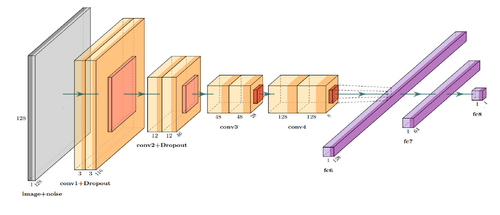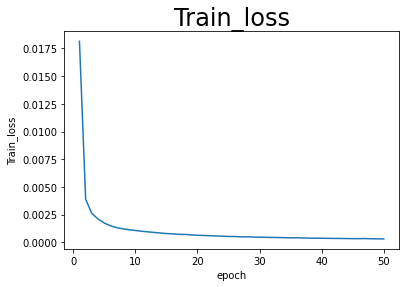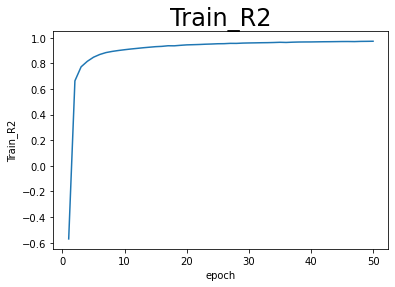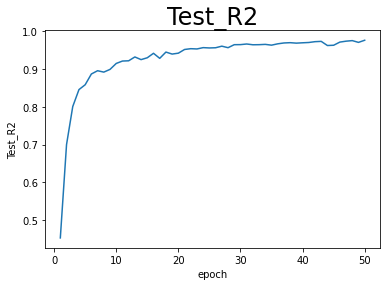“Deep learning on galaxy morphology profile”的版本间差异
跳到导航
跳到搜索
无编辑摘要 标签:手工回退 |
无编辑摘要 |
||
| 第2行: | 第2行: | ||
==Introduction== |
==Introduction== |
||
This project focuses on fitting galaxy pictures to their morphological parameters based on galaxy morphology. |
This project focuses on fitting galaxy pictures to their morphological parameters based on galaxy morphology. |
||
==Method== |
==First Method== |
||
*The first work aims to reproduce the task of fitting the parameters of galaxies with galaxy information in the article "Deep learning for galaxy surface brightness profile fitting". The galaxy morphology parameters contain the magnitude of galaxies, the profile Sersic index of galaxies, the half-light radius of galaxies, and the axis ratio of galaxies. |
*The first work aims to reproduce the task of fitting the parameters of galaxies with galaxy information in the article "Deep learning for galaxy surface brightness profile fitting". The galaxy morphology parameters contain the magnitude of galaxies, the profile Sersic index of galaxies, the half-light radius of galaxies, and the axis ratio of galaxies. |
||
*The cited paper presents a new method for modeling 2D photometric galaxy profiles based on 2D convolutional neural networks: DeepLeGATo for automated and fast analysis of galaxy morphology. |
*The cited paper presents a new method for modeling 2D photometric galaxy profiles based on 2D convolutional neural networks: DeepLeGATo for automated and fast analysis of galaxy morphology. |
||
| 第13行: | 第13行: | ||
[[File:test_loss.png|500px|center|jumengting]] [[File:test_r2.png|500px|right|jumengting]] |
[[File:test_loss.png|500px|center|jumengting]] [[File:test_r2.png|500px|right|jumengting]] |
||
==Else== |
|||
The second task fits the data to multiple parameters. |
|||
==Else== |
==Else== |
||
2022年10月1日 (六) 07:38的版本
Introduction
This project focuses on fitting galaxy pictures to their morphological parameters based on galaxy morphology.
First Method
- The first work aims to reproduce the task of fitting the parameters of galaxies with galaxy information in the article "Deep learning for galaxy surface brightness profile fitting". The galaxy morphology parameters contain the magnitude of galaxies, the profile Sersic index of galaxies, the half-light radius of galaxies, and the axis ratio of galaxies.
- The cited paper presents a new method for modeling 2D photometric galaxy profiles based on 2D convolutional neural networks: DeepLeGATo for automated and fast analysis of galaxy morphology.
- Firstly, GalSim is used to generate information files of relevant galaxies based on random parameters. Because deep learning requires a large number of images and parameter samples, the cost of manual annotation of images is too high; and the expertise of the person conducting the annotation is required. Generating datasets with parameters is a more convenient experimental method.
- When generating galaxy data with GalSim software, the dimension size of the generated data is also set to random because the dimension size of the real galaxy data varies. The python library is used to generate 50,000 galaxy information, which is partitioned into a training set, a test set, and a validation set in the ratio of 8:1:1. In order to handle galaxy images of different sizes, this paper uses two-dimensional data with a standard size of 128*128 size, which will be different in shape from 128*128 size, cut the center of galaxy images larger than 128*128 pixels, and fill the edges of images smaller than 128*128 pixels.
- The neural network structure used in the experiments to construct a neural network structure similar to the original text is shown in the following figure.
- The above network fits the galaxy data to one parameter using a two-dimensional convolutional neural network. The following are the training results for training a single parameter - star magnitude.
Else
The second task fits the data to multiple parameters.
Else
The second task fits the data to multiple parameters.




